A guide to staking Juno and claiming your rewards to compound with Keplr Wallet.
Junø is a smart-contract hub for the Cosmos Ecosystem. It supports smart contracts coded in Rust or Golang with the CosmWasm framework. Thanks to IBC, smart contracts deployed on Juno can be usable across multiple sovereign networks. Juno serves as a decentralized, permissionless, and censorship-resistant space for developers.
In this article, we go over how to stake your $JUNO and how to claim your rewards! Have a look at the steps below. If you already have a Keplr Wallet, feel free to skip to step 3.
Create your Keplr Wallet
- To get started, go to: https://wallet.keplr.app/ to download the Keplr extension.
Once ready, open the page. Select "Create a new wallet" to start setting up your account. If you already have a Keplr wallet, select "Import existing wallet."
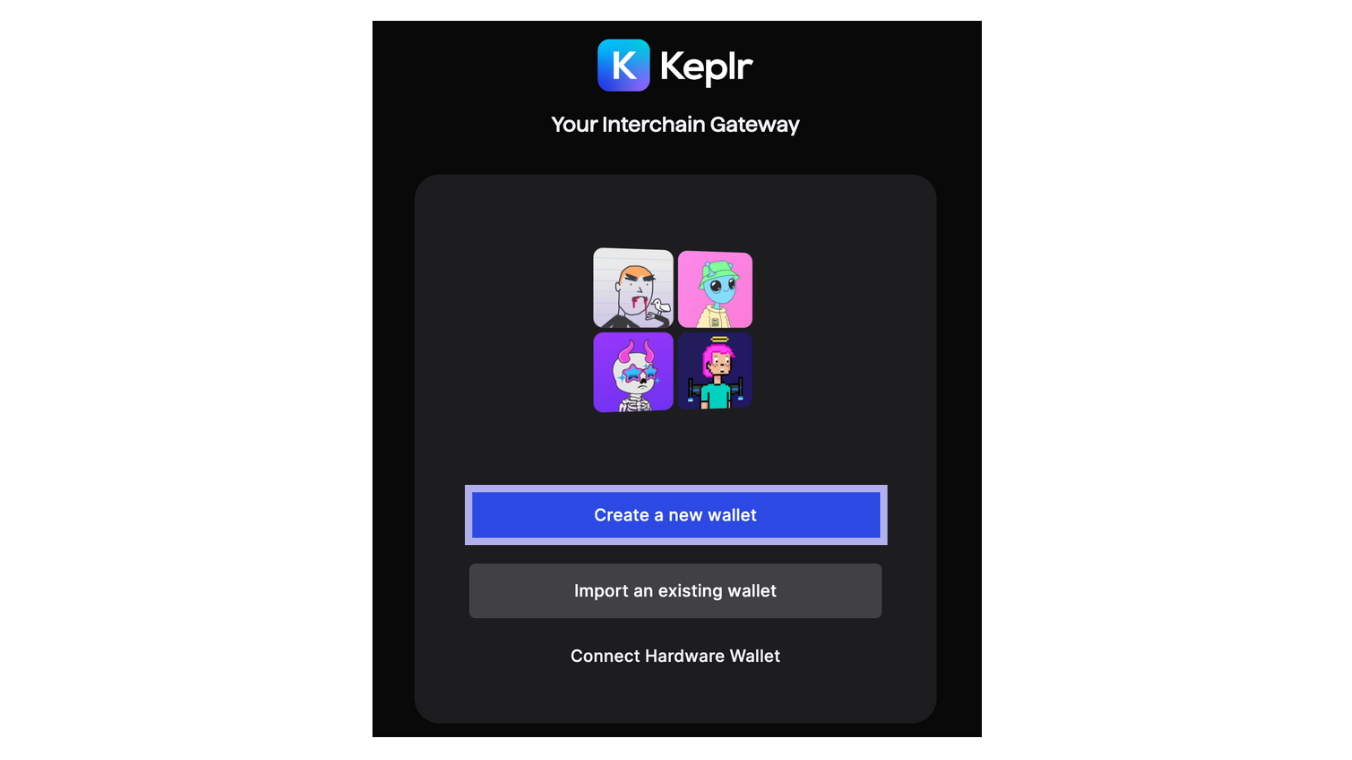
If you've selected "Create a new wallet", Keplr will ask you to select a new recovery phrase or to connect with Google. In this guide, we'll use the Recovery Phrase.
Remember to store your recovery phrase securely offline and never share it with anyone. If you lose your recovery phrase, you will lose the assets within the wallet.
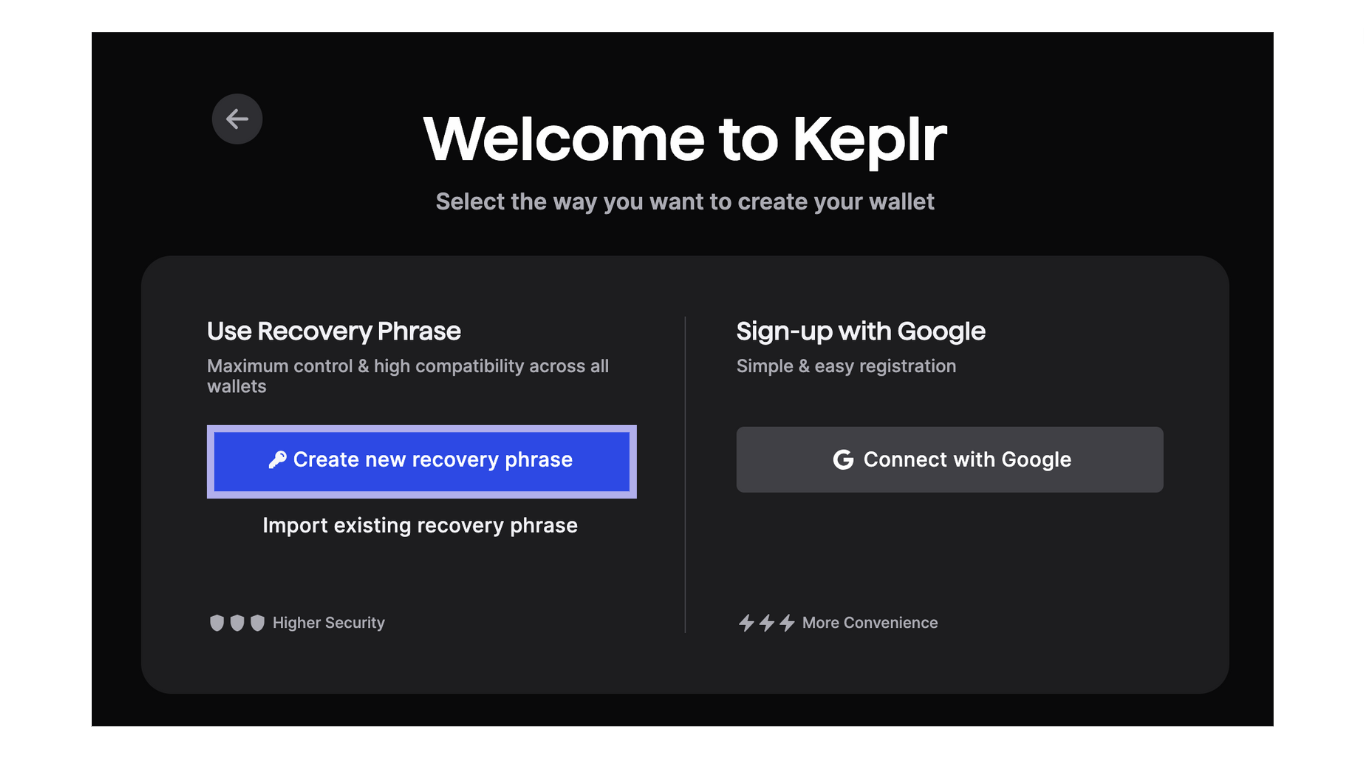
Once you've copied your seed phrase, fill out your account name and desired password and confirm by selecting "Next".
To confirm, you will be asked to give a few words of your seed phrase. Fill out the request words and select "Register".
You're Keplr wallet is now ready. Go to: https://wallet.keplr.app/ to continue.
Start Staking
Now that you’ve opened the dashboard copy your account address to send $JUNO to your Keplr wallet from any exchange or another Cosmos wallet; we used Osmosis DEX for this one. Once you’ve done so, wait a couple of seconds, grab yourself a cup of coffee, and return to get started with staking!
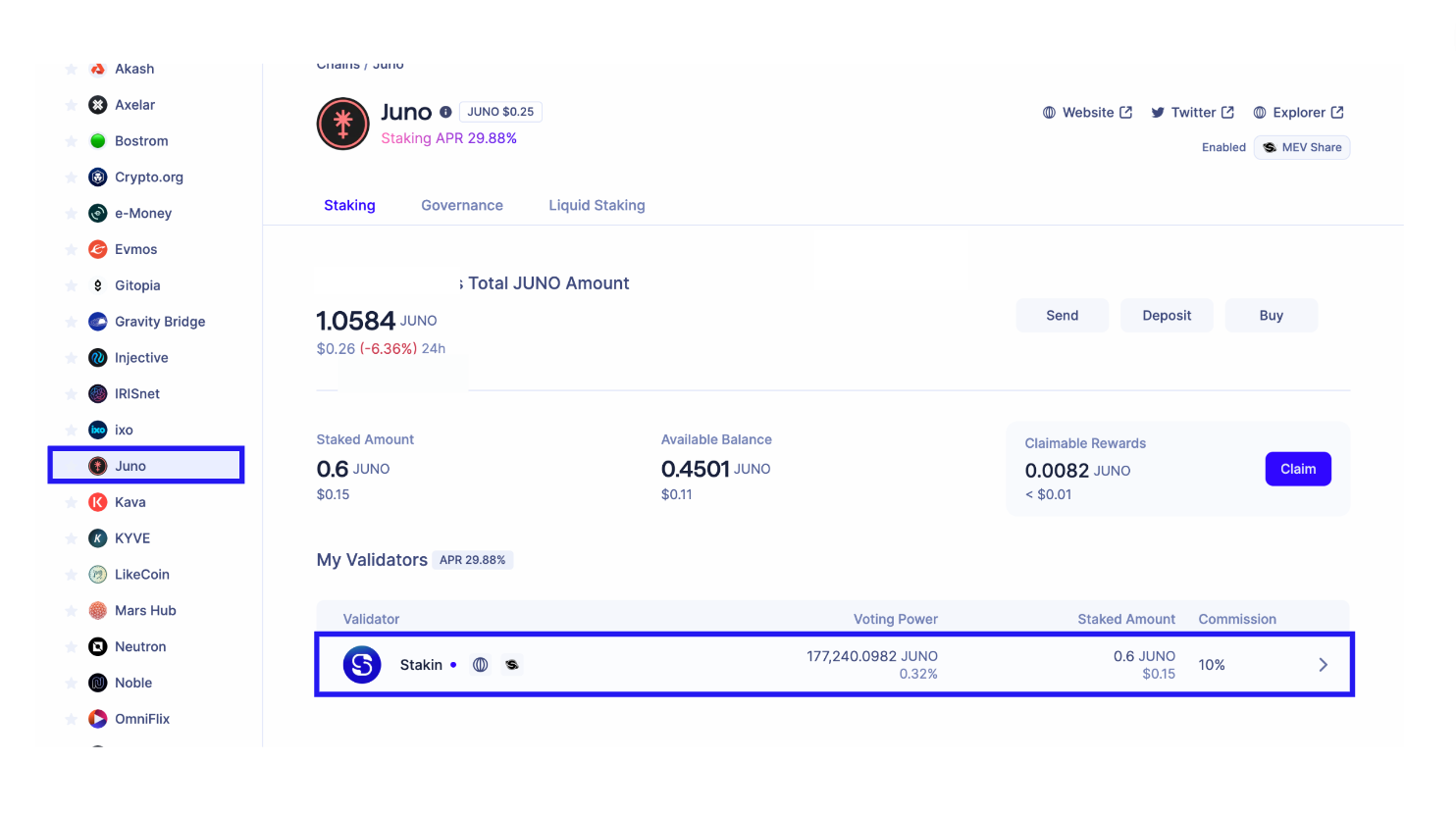
On the dashboard’s left drop-down menu, select “Juno” this will take you to the JUNO overview, where you can find all the validators, staked, and claimable assets.
Add your desired validator into the search bar or scroll down to select the validator of your choice. Click on the validator that you'd like to stake with.
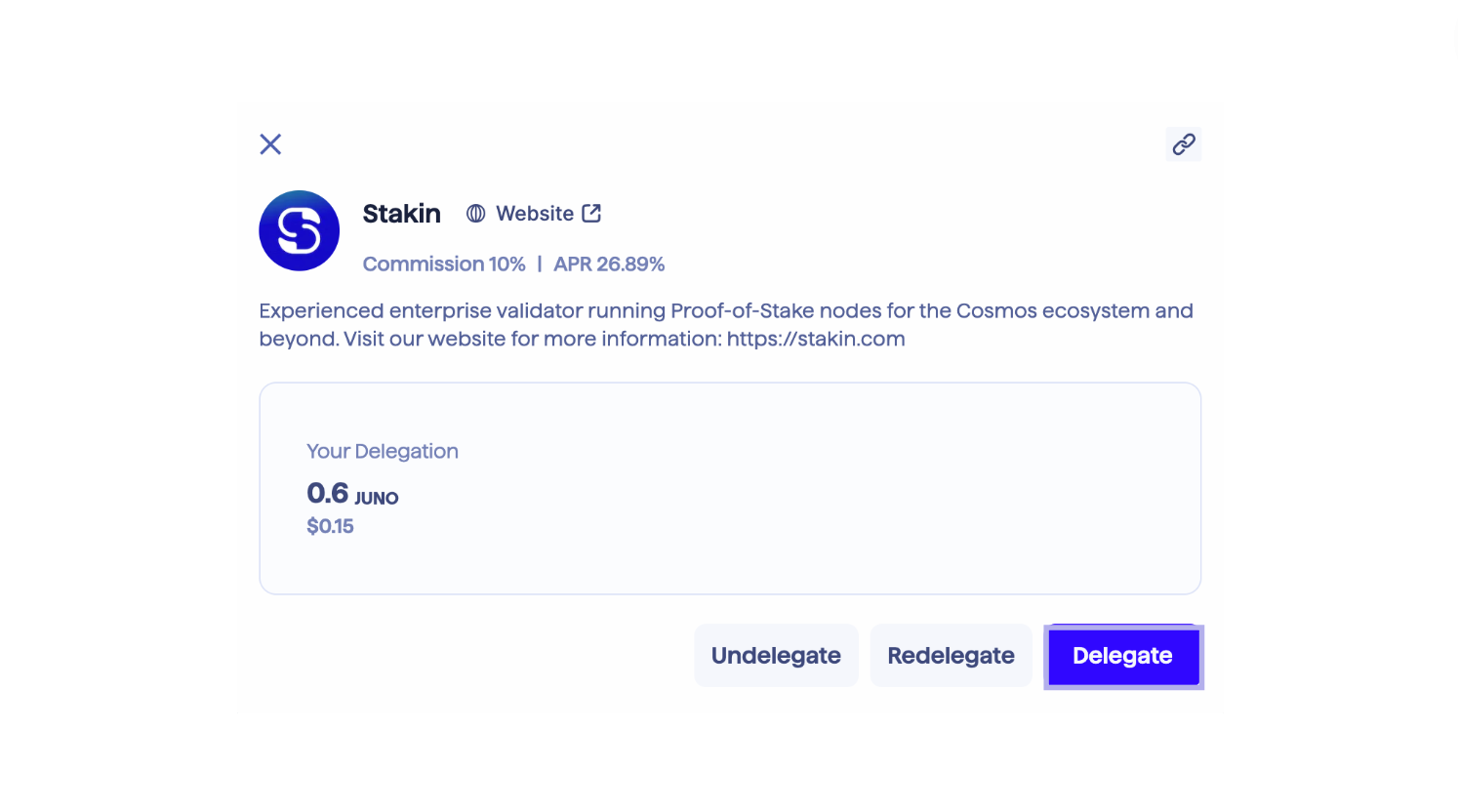
A pop-up will appear on which you can decide to undelegate, redelegate, and delegate. Select "Delegate" to continue.
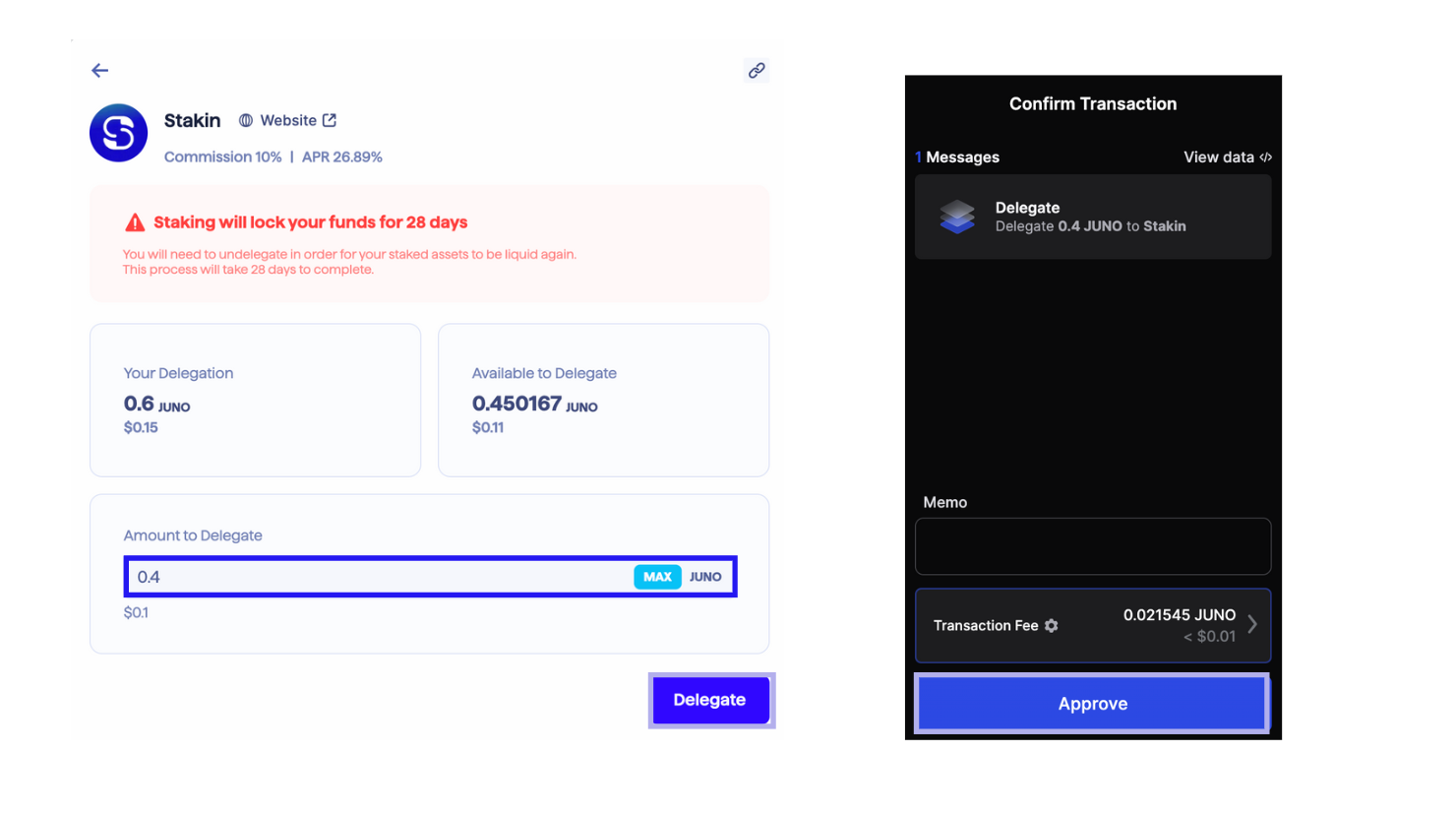
Fill out the amount that you'd like to stake and select "Delegate". Confirm the transaction in your Keplr Wallet by selecting "Approve".
Congratulations!! You’ve now staked your $JUNO!!
Remember that staking you $JUNO will lock your funds for 28 days. Also, keep in mind that you'll need to keep a little bit of $JUNO in your wallet to pay for transaction fees.
Claiming Staked $JUNO Rewards
In the Keplr dashboard, you'll be able to see the staked amount, available balance, and claimable rewards. On Juno, you'll need to claim your rewards and restake them yourself.
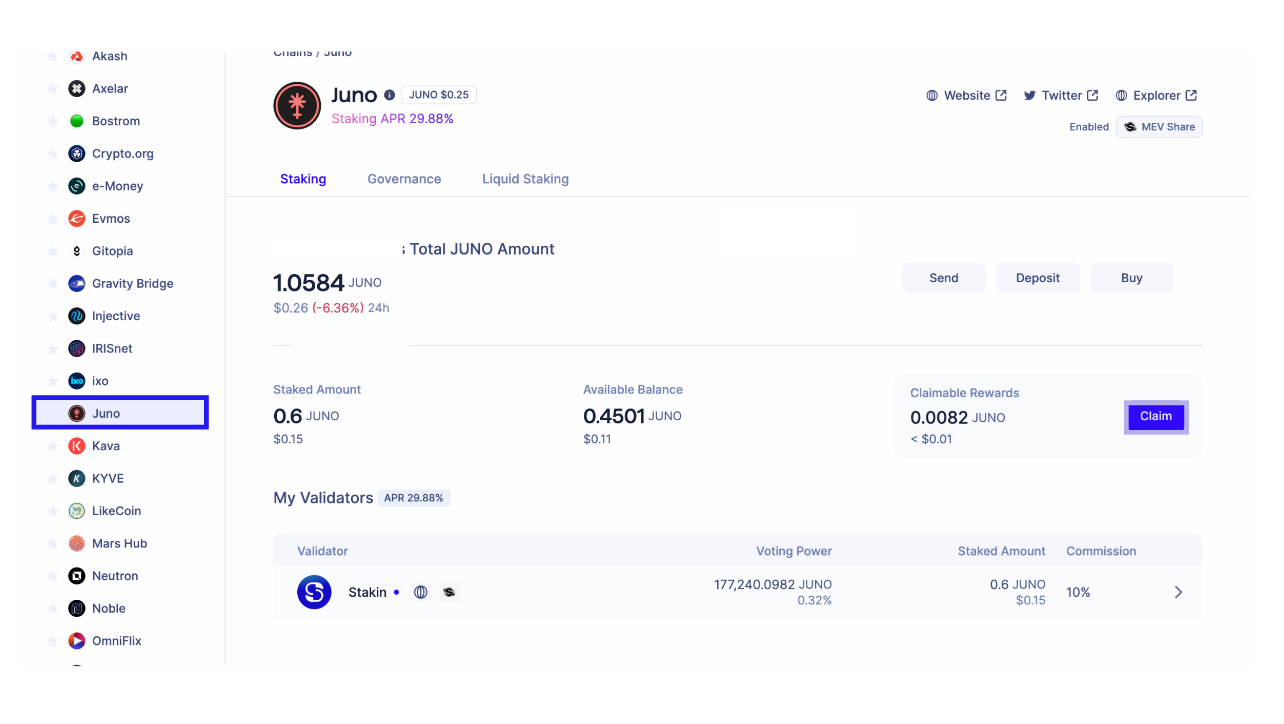
Select “Claim,” and in the pop-up, set a gas fee, then select “Approve”. After a few minutes, you will receive confirmation that your transaction has been sent. You can now see your $JUNO added to your total balance. You're now able to restake your Juno via the steps above.
DISCLAIMER: This is not financial advice. Staking, delegation, and cryptocurrencies involve a high degree of risk, and there is always the possibility of loss, including the failure of all staked digital assets. Additionally, delegators are at risk of slashing in case of security or liveness faults on some protocols. We advise you to do your due diligence before choosing a validator.


Join the conversation